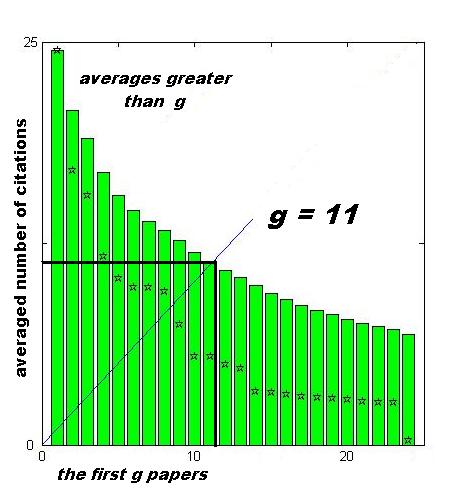Library
Research Guides
Citation Tracking & Bibliometrics
- Bibliometrics
Citation Tracking & Bibliometrics
This guide helps
people learn about the citation searching process and the citation
indexes available to the world of scholarly publishing.
people learn about the citation searching process and the citation
indexes available to the world of scholarly publishing.
What is Bibliometrics?
The branch of library science concerned with the application of
mathematical and statistical analysis to bibliography; the statistical
analysis of books, articles, or other publications. (see definition in Oxford English Dictionary Online)
Bibliometric measures are data about publications, or citation frequency.
Scientometrics is the branch of information science concerned with
the application of bibliometrics to the study of the spread of
scientific ideas; the bibliometric analysis of science. (see definition
in Oxford English Dictionary Online)
mathematical and statistical analysis to bibliography; the statistical
analysis of books, articles, or other publications. (see definition in Oxford English Dictionary Online)
Bibliometric measures are data about publications, or citation frequency.
Scientometrics is the branch of information science concerned with
the application of bibliometrics to the study of the spread of
scientific ideas; the bibliometric analysis of science. (see definition
in Oxford English Dictionary Online)
Journal Citation Reports (Part of Web of Knowledge)This
resource compares individual journals in the sciences. Users can use
this database to identify the most frequently cited journals, journals
with the highest impact factor in their field and the largest journals
in a field. This database does NOT search for journal articles.
Web of Science (part of Thomson Reuters Web of Knowledge)Citation searching and analysis from 1972-present.
ScopusCitation searching and analysis from 1858-present.
Google ScholarScholar
tracks citations and provides h-index and i10-index scores but does not
eliminate duplicate entries or self-citations, so these scores cannot
be considered definitive.
Where to Find Citation Tools and Measures
- Citation Tracker (Scopus)
- h index (researchers' impact) (Scopus, Web of Science, Google Scholar)
- h-Graph (depicts impact of a set of articles) (Scopus)
- Journal Citation Reports (Journal Citation Reports (WoS))
- Citation Map (Web of Science)
- My Citations (Google Scholar)
Journal Citation Reports (Thomson Reuters)
Thomson Reuters' Journal Citation Reports database is found on the Databases A-Z
page. Below is a screenshot of the 2011 list of Journals in the
"Engineering, Mechanical" category, showing all the types of metrics
included in a Journal Citation Report.

page. Below is a screenshot of the 2011 list of Journals in the
"Engineering, Mechanical" category, showing all the types of metrics
included in a Journal Citation Report.

Journal impact tools and measures
Journals
Journal Citation Reports (Thomson Reuters)
h index (used in many citation trackers including Web of Science, Google Scholar, Scopus)
Journal Citation Reports (Thomson Reuters)
- [# of citations in a year]/[total # of articles published in 2 previous years]
- Eugene Garfield, 1950s
Article Influence (uses Thomson Reuters citation data; in Journal Citation Reports or at http://www.eigenfactor.org)
Eigenfactor (uses Thomson Reuters citation data; in Journal Citation Reports or at http://www.eigenfactor.org)
Scopus (Elsevier)Eigenfactor (uses Thomson Reuters citation data; in Journal Citation Reports or at http://www.eigenfactor.org)
Journal Analyzer (uses Elsevier citation data; in Scopus)
SNIP (uses Elsevier citation data; in Scopus or at http://www.scimagojr.com/index.php)
SJR (uses Elsevier citation data; in Scopus or at http://www.journalindicators.com/)
SJR (uses Elsevier citation data; in Scopus or at http://www.journalindicators.com/)
SNIP & SJR @ Journalmetrics.com by Elsevier
Authorsh index (used in many citation trackers including Web of Science, Google Scholar, Scopus)
Jorge Hirsche, 2005
Based on author's years active as well as number of citations of specific articles
Example: h score of 10 = at least 10 articles cited at least 10 times each
g index (used in Publish or Perish, elsewhere)Leo Egghe, 2006
Adds weight to heavily-cited articles in h-index metric
Journal Impact Factor: Example
| 2012 | 2011 | Total | |
| Cites in 2013 to items published per year | 471 | 459 | 930 |
| Number of items published per year | 30 | 25 | 55 |
| 2013 Impact factor (Cites to recent items/Number of recent items) |
16.909 |
G-index
Invented by Leo Egghe (scientometrician, Belgium; in "Theory and practise of the g-index," Scientometrics, Vol. 69, No. 1 (2006) 131–152)

Image: By Ael 2 (Own work) [CC BY-SA 3.0, via Wikimedia Commons
- Adds weight to heavily-cited articles in h-index metric
- The average of citations matched by the number of articles rather than the number of citations matched by the number of articles

Image: By Ael 2 (Own work) [CC BY-SA 3.0, via Wikimedia Commons
H-index
Invented by Jorge Hirsch (physicist, UCSD), 2005
Used in Web of Science, Google Scholar, Scopus
Based on years active as well as number of citations of specific articles (as well as your subscription span to Web of Science)

Image: By en:user:Ael 2, vectorized by pl:user:Vulpecula (vectorized version of File:H-index_plot.PNG) [Public domain], via Wikimedia Commons
Used in Web of Science, Google Scholar, Scopus
Based on years active as well as number of citations of specific articles (as well as your subscription span to Web of Science)
- h score of 10 = at least 10 articles cited at least 10 times each
Image: By en:user:Ael 2, vectorized by pl:user:Vulpecula (vectorized version of File:H-index_plot.PNG) [Public domain], via Wikimedia Commons
Database Help
Bibliometrics - Citation Tracking



No comments:
Post a Comment